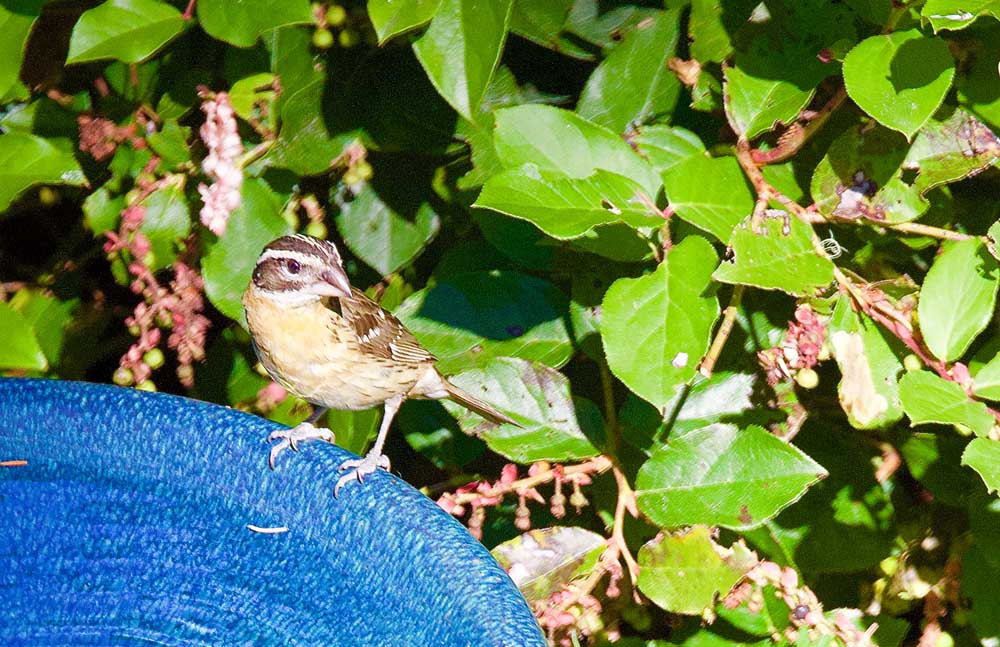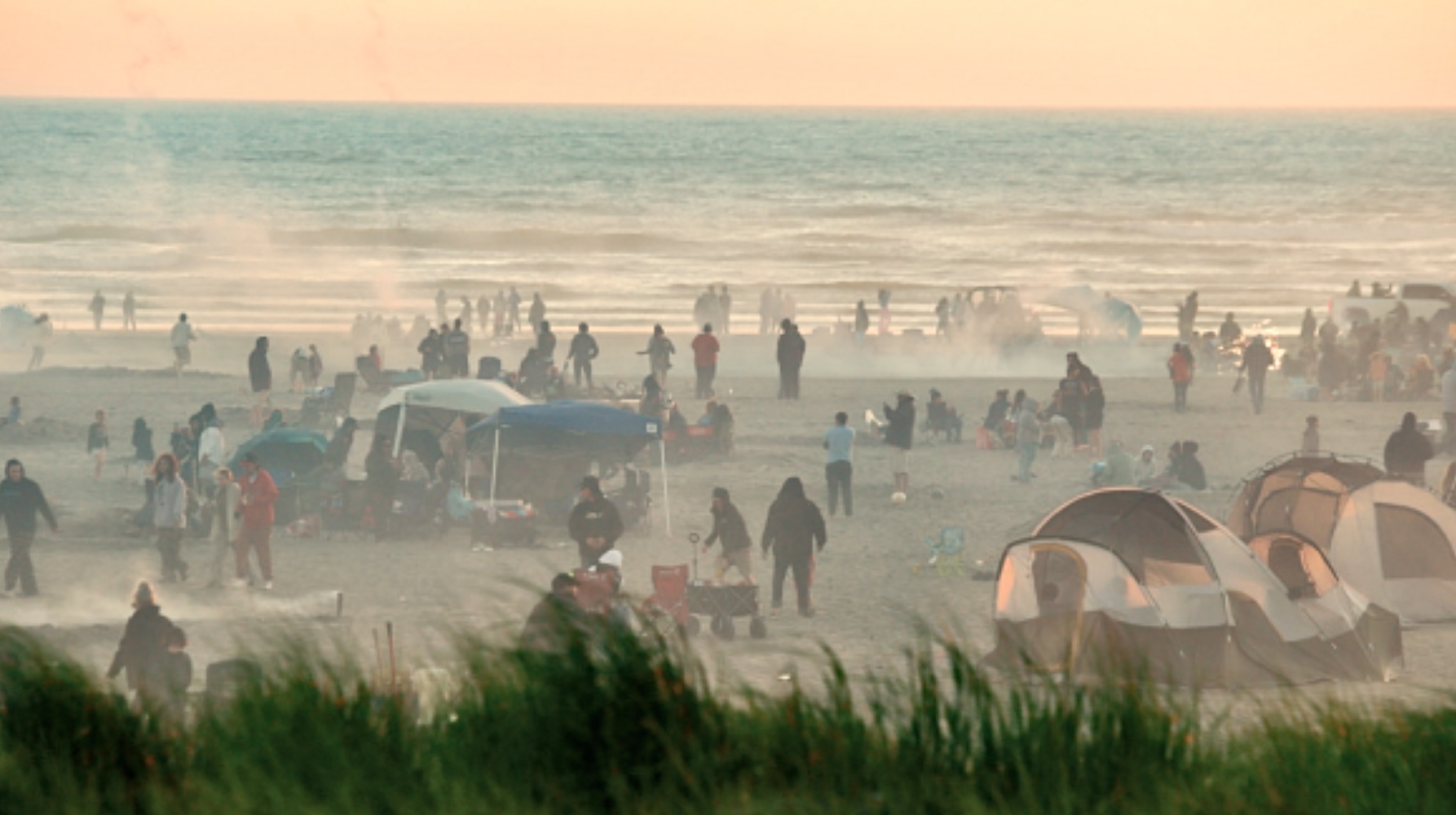News from Cornell: Spring migration still underway
Published 11:42 am Wednesday, May 1, 2024

- MADELINE KALBACHThe black-headed grosbeak (photo is a female) is among the species that are now being reported as arrived on the peninsula.
Cornell has just released a report on spring migration. Axelson and Leonard (2024) utilize data from the BirdCast project to map out peak spring bird migration.
Peaks are defined as the periods with the highest nightly average of aerial bird density. Data were collected from 143 radar sights from 2013-2022, analyzed by Adriaan Doktor for this report. BirdCast is a joint project between the Cornell Lab of Ornithology, Colorado State University, and University of Massachusetts Amherst.
Data have been collected since 1999. The data were utilized to determine the peaks of nightly bird migration this spring. The peak is defined as the average number of birds in the night sky. Each radar site measured aerial bird densities every 10 minutes from 2013 to 2022 for this research report.
Report highlights
The report indicates that the West will experience its peak bird migration in late April and early May, while the Northeast and Upper Midwest will experience their peaks much later in May. However, small numbers of birds can be observed and listened for every day and night during the migration season since small numbers of birds fly nearly every night during migration. The map indicates these findings. The date of peak migration across the United States is represented by a different color. Blue, for example indicates the peak migration from April 21-26. Our peak is designated by the color yellow and is for May 3-8. A close look at the dates and their color explains the findings below.
“The western Gulf of Mexico and Texas has a later peak migration date than the eastern Gulf.” The reason being species composition which differs in these two areas. “By far the most long-distance migrations [birds such as warblers and orioles that are migrating from overwintering grounds in Central and South America] arrive in the U.S. in the western Gulf states and through Mexico, and fewer arrive in the East.” The Southeast is the main region where lots of common short-distance migrants winter [such as sparrows and blackbirds], and these birds migrate several weeks earlier.”
The same pattern occurs in California’s central valley. Here there is “an island of overwintering grounds for short-distance migratory birds.” This area is surrounded by the flight paths of long-distance migrants.
The corridor from western Texas north to North and South Dakota experiences earlier peak migration compared to surrounding areas.
Another highlight of the report indicates that “the Great Plains are a main highway for migration.” As you can see by the dates and color, the birds migrate north and then move westward and east.
Other findings
There is a need to help birds migrate safely. It can be done by dimming or turning off non-essential lights from 11 p.m. to 6 a.m. during migration. Alternatively, blinds can be used to block out the light. In our area, the recommended dates are from April 30th to May 3rd. While these days are now past for us. It is something interesting to remember.
Bird collisions with windows is another hazard that migrating birds face. We can help them by making glass safe during the day. Scientist find that breaking up the reflections of vegetation, sky, and trees make glass more visible to the birds. Another easier way to accomplish this is to put decals in the windows spaced 2 inches apart. The report indicates that these methods work and will make windows safe throughout the year.
Summary
We still have a few days as of this date to experience peak migration or at least notice some bird migration. Birds will continue to migrate until nearly the end of May and perhaps longer if their migration is delayed by weather or some other happening.
Like the robins that come our way early and decorated our trees for at least two weeks before some moved on, other species may also be seen in large numbers as migration progresses.
Happy birding!






